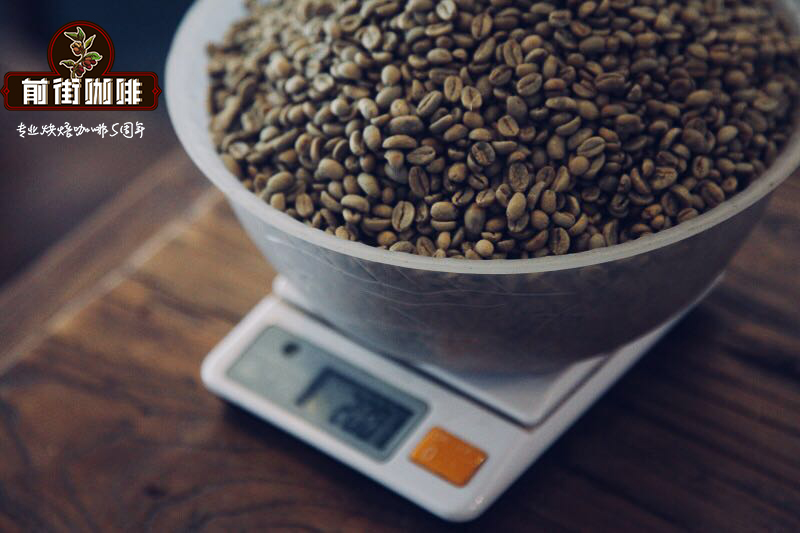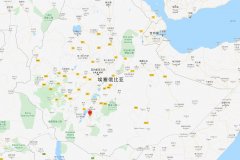The ranking system of raw beans in coffee producing countries introduces what is the best grade of coffee beans.

Ethiopia (graded in proportion to defective beans)
Before the emergence of the Ethiopian Commodity Exchange (Ethiopia Commodity Exchange referred to as ECX), Ethiopia's coffee export grade was established by the CLU Department of the Ministry of Agriculture (Cupping and Liquoring Unit), which mainly graded coffee raw beans according to the number of defective beans in 300g, as shown in the table below.
Grade
Number of defects (per 300g)
Grade 1
≤ 3
Grade 2
4-12
Grade 3
13-25
Grade 4
26-45
Grade 5
46-90
General washing treatment is G1-G2, due to the technical problems of sun treatment at that time, sun beans are generally G3-G5, with the improvement of sun treatment technology, now the sun beans can also reach the G1-G2 level.
After the establishment of ECX (Ethiopia Commodity Exchange) in 2008, it was graded by the combination of physical properties of raw coffee beans and cup flavor characteristics.
ECX defines all coffees as unwashed and washed as three types:
The number of defects in Speciality is less, and the cup test has high flavor quality.
Commerical does not reach the boutique grade, but it is higher than the domestic consumption grade (Local / Domestic).
Local / domestic (Local / Domestic) coffee with relatively poor flavor caused by many defects (unripe beans), out-of-season and poor storage.
Among them, boutique and commerce are aimed at the export international market. ECX divides coffee raw beans into nine grades according to the total score of physical attribute characteristics and cup test flavor characteristics, of which the physical feature score accounts for 40% and the cup test mass score accounts for 60%.
Physical characteristics (40%):
Washing treatment: number of defects (20%), appearance size (10%), color (5%), smell (5%)
Non-washing treatment: number of defects (30%), odor (10%)
Cup test quality (60%)
Grade
Score
Water washing
Non-washing
Grade 1
91-100
91-100
Grade 2
81-90
81-90
Grade 3
71-80
71-80
Grade 4
63-70
63-70
Grade 5
58-62
58-62
Grade 6
50-70
50-70
Grade 7
40-49
40-49
Grade 8
31-39
31-39
Grade 9
20-30
20-30
Then the G1-G3 was tested again according to the SCAA standard, and its flavor properties were evaluated in more detail, and the G1 and G2 were rated as Q1 for no less than 85, Q2 for G1 and G2 G3 between 80 and 85, and G3 for all G1Magi G2 G3 below 80.
Q1 and Q2 are classified as boutique grade exports. G4-G9 remains unchanged and is classified as commercial grade export together with G3.
Kenya (graded by particle size)
Kenyan coffee grading is mainly based on the size of coffee particles, usually divided into eight grades.
E (elephant bean): the "E" here stands for Elephant, that is, "elephant", but it is not the elephant bean in the coffee bean variety (Maragogype). It is a kind of bean whose two seeds are intertwined with each other because of abnormal development, forming a "seemingly one" bean, which can be regarded as a flaw. Generally speaking, there are two seeds in a fruit, affixed face to face, so there will be a flat side, called flat beans, mother beans. E is two seeds in the process of growth, stick together, become super-large beans. Aah! aah! The size of grade E particles is more than 18 mesh (1 mesh is 1x64 inches), and the number is rare.
AA: the size of this grade is about 17018 items (about 6.7~7.1mm), which is the Kenyan coffee grade that most people often hear. In boutique coffee, this grade is usually called AA TOP, and it is also a bean that most coffee shops will sell. But AA does not represent the best, it is just that the size of beans should not be confused with flavor.
AB: most coffee beans are in this category, and they are called AB mainly because A with a mesh size of 6.80 mm,B is 6.20mm, and these two sizes of coffee beans (An and B) are sold together, so they are called AB, with a size of about 15 million 16 mesh (about 6.0~6.4mm).
C: the particle size falls between 14015 mesh (about 5.6~6.0mm), which is smaller than that of B grade.
PB: the full name is Peaberry, also known as small round beans, can also be called public beans. Compared with ordinary flat beans, this is also rare, accounting for about 10% of all coffee beans, mainly because only one seed in the fruit has developed to get small and round beans. Some people will particularly like the flavor of PB, so they will pick out the PB and sell it.
TT: these coffee beans are light beans selected from AA and AB beans by air sorter. They are usually light in weight and substandard in hardness, as well as broken and defective beans.
T: lighter beans, broken beans, and even broken fragments of beans selected from C-grade beans.
MH/ML: this kind of coffee beans will not be exported. They are usually coffee beans that are overripe and fall to the ground. They are of poor quality, accounting for about 7% of all coffee beans, only for the Kenyan domestic market.
There are many countries classified by the size of raw beans, such as Tanzania, Rwanda, Colombia, Jamaica and so on.
Colombia
Grade
Size standard
Supreme Screen 18 +
More than 95% 18 mesh
Supreme
More than 95% 17 mesh
Excelso Extra
More than 95% 16 mesh
Excelso EP
14-16 mesh
U.G.Q
More than 14 mesh
Jamaica
Grade
Size standard (defect rate less than 3%)
NO.1
More than 17 mesh
NO.2
More than 16 mesh
NO.3
More than 15 mesh
PB
More than 14 mesh
Costa Rica, Panama, Guatemala and other Central American regions (graded by raw bean hardness)
At the same latitude and on the same plot, the higher the altitude, the greater the temperature difference between day and night, the longer the coffee growing period, the harder the beans, the more nutrients absorbed in the beans, the more obvious the flavor substances will be.
Grade
Altitude
SHB (Strictly Hard Bean) extremely hard bean
≥ 1400m
HB (Hard Bean) hard bean
1200-1400m
SH (Semi Hard Bean) slightly hard beans
1100-1200m
EPW (Extra Prime Washed) excellent water-washed beans
900-1100m
PW (Prime Washed) high quality water washed beans
800-900m
EGW (Extra Good Washed) washed beans with extra good water
600-800m
GW (Good Washed) good quality water washed beans
≤ 600m
Sal Vaido, Honduras (classified by altitude)
Grade
Altitude (El Salvador)
Altitude (Honduras)
SHB (Strictly High Grown) extremely high altitude growth
≥ 1200m
≥ 1221m
HG (High Grown) highland growth
900-1200m
915-1220m
S (Standard) standard
--
610-915m
CS (Central Standard) Central Standard
500-900m
--
Brazil (graded by mesh size, defect rate, cup test score)
Brazil believes that only completely flawless beans can become NY.1, while completely flawless beans do not exist. So, among the raw beans in Brazil, the best is NY.2.
According to the size of beans.
Types
Quality
NY.2
17-18 mesh FC
NY.2/3
14-16 mesh FC
NY.3/4
DD Quality
NY.4/5
14-16 mesh GC
According to defect rate
Types
Number of defective beans (per 300 grams)
NY.2
six
NY.2/3
nine
NY.3
thirteen
NY.3/4
twenty-one
NY.4
thirty
NY.4/5
forty-five
NY.5
sixty
NY.5/6
> 60
The cup test levels in Brazil are as follows:
Fine Cup (FC), Fine, Good Cup (GC), Fair Cup, Poor Cup, Bad Cup
Important Notice :
前街咖啡 FrontStreet Coffee has moved to new addredd:
FrontStreet Coffee Address: 315,Donghua East Road,GuangZhou
Tel:020 38364473
- Prev

Classification of Yejashefi Coffee Bean characteristics of coffee beans in Yega Sheffei producing area
Yega Xuefei was originally a medium-sized town for the distribution and transportation of coffee beans in Ethiopia's Sidamo province. Because the elevation is higher than other coffee producing areas in Sidamo province (belonging to ancient volcanic soil), it is located in the south of Ethiopia, affected by the southeast monsoon of the Indian Ocean, in this dry and wet season, mineral-rich eolian environment, it is almost tailor-made by Arabica coffee beans.
- Next
The significance of the red cherry project. Red cherry coffee beans from the Yejia sherry region.
What is Project Red Cherry? The Red Cherry Project is a campaign launched by Dutch coffee brewer Trabocca to encourage hard-working coffee farmers to provide roasters with the most unique quality coffee beans. This is an innovative movement for high-quality coffee beans. The team knows that coffee farmers can only produce the best quality coffee by understanding the information of mature coffee cherries.
Related
- Beginners will see the "Coffee pull flower" guide!
- What is the difference between ice blog purified milk and ordinary milk coffee?
- Why is the Philippines the largest producer of crops in Liberia?
- For coffee extraction, should the fine powder be retained?
- How does extracted espresso fill pressed powder? How much strength does it take to press the powder?
- How to make jasmine cold extract coffee? Is the jasmine + latte good?
- Will this little toy really make the coffee taste better? How does Lily Drip affect coffee extraction?
- Will the action of slapping the filter cup also affect coffee extraction?
- What's the difference between powder-to-water ratio and powder-to-liquid ratio?
- What is the Ethiopian local species? What does it have to do with Heirloom native species?

